#books reviews
Text

#book blog#bookaddict#bookaholic#bookshelves#bookstagram#booktok#bibliophile#booklovers#bookstack#bookworm#top books#books reviews#bookish#new books#favorite books#rina kent#rebecca yarros#stephanie garber#meagan brandy#lauren asher
166 notes
·
View notes
Text


Books I loved with endings that made me wants to scream, throw them against the wall, cry, then immediately reread.
9 notes
·
View notes
Text

Me preparing for bad reviews if I ever get published.
16 notes
·
View notes
Text
Nothing screams Dostoevsky more than descending into madness on the couch, right? Well, it's not only that, I can assure you.
BEHOLD, I've finally finished this monster of a book (so you don't have to heh). In case you're not familiar with Dostoyevsky or the topic of Crime and Punishment, let me give you a short summary. Raskolnikov, our main character that we follow, is a law student who dropped out and now struggles to live in St. Petersburg. During his struggle, he gets this amazing idea of committing murder, and he does so. He kills a pawnbroker, and then, well, the suffering begins. I'm not going to dive deeper into it at the moment, since some of you might want to read it.
The actual topics behind the plot are definitely not murder or the criminal desire, but the torment and guilt that affects the murderer. We discover that after the murder (crime part of the title), the torment follows shortly (the punishment part of the title lol). It's extremely visible, we can say hidden in plain sight even, that for Raskolnikov, the guilt in itself it's the punishment, and he deeply desires to liberate himself from it. He achieves this by going back and forth between a dreamlike state and reality while acting as though he has gone insane. Because there is so much more going on in the novel, we frequently become disconnected from him, which makes us more curious about what will ultimately happen to our tormented hero.
Dostoyevsky is well known for creating long, unnerving and (why not) boring paragraphs or plotlines. If not for my very stubborn and motivated personality, I would've given up a long time ago. Besides Raskolnikov's murder story, we also get a glimpse of other character's lives, such as: his sister, Dunya, and her "soon to be'' husband Luzhin; Svidrigailov, a man with his very own disputable past, and Marveladov and his family. All of these characters comprise, as a whole, what we call Crime and Punishment, and without them, the book wouldn't have been what it is.
I must admit that I personally felt completely disoriented (at times) by the number of characters that kept being thrown into the story for no particular reason. The perspective contributed to the confusion without a doubt, BUT I THRIVED YAY.
Now allow me to fangirl, will ya? Razumikhin, bless him! Such a meow meow character, definitely made the whole sufferings of reading Dostoyevsky more enjoyable. I was howling for more interactions between Raskolnikov and Razumikhin. The chemistry between them was amazing and I genuinely feel like it was underdone and overshadowed by the other plot lines.
Story wise, some very intriguing topics have been touched upon, such as "the ones that are ordinary people and the ones that are extraordinary". If you're not familiar with the plot, later in the novel, Porfiry (chief investigator) finds out that Raskonikov wrote an article on those who kill and why. He stated that those that are extraordinary have a duty and obligation of committing all manners of outrageous acts. This sparks a whole chapter of discussion as to who has what right on what actions, that subsequently ends with Porfiry starting to unravel the mystery and sniff out Raskolnikov. Napoleon is mentioned quite a lot in this context, showing the amount of influence French culture had on Russia at that time, and even at the end, when the confession happens, Raskolnikov admits he tried being a Napoleon, situating him in the small bubble of what earlier was called "extraordinary people". What stopped Raskolnikov from becoming an "extraordinary" was his inner punishment and the fear of being caught, even though he covered his footsteps surprisingly well. In his own way, he knew that self attained peace with his act was never a thing that could've been achieved; and so, he prolonged his freedom (which was only suffering in disguise) until his incarceration, bound to happen sooner or later, a natural step for those who are not extraordinary.
In the epilogue we get to see a different Raskolnikov, regretful, sad but still somewhat unable to fully acknowledge the murder. "Yes, of course, a criminal act has been committed; yes, of course the letter of the law has been violated and blood's been shed - so take my head for the letter of the law … and that's your lot! (And, of course, plenty of humanity's benefactors, who never inherited power but grabbed it for themselves, should also have been executed after taking their very first step. But those people coped with the step that they took, which is why they are right,) but I couldn't cope with mine, so I had no right to take it. That was the only crime he acknowledged: that he hadn't coped and had turned himself in." His only guilt and regret revolve around his own inability to thrive through the punishment he couldn't cope with, and he still seems oblivious to the murder part. Towards the end, Rodya lacked any type of will that drove him before ("He lived with eyes lowered: looking up seemed loathsome, unbearable") and after a short encounter with Sonya, he got the Gospel she gave him and started pondering on whether he should start believing in what she believes.
To end it on a hopeful tone, he began looking forward to a future with her, leaving us uncertain as to what happens further. We can only hope that somewhere, after his sentence ended, he did get reunited with Sonya and lived a life together.
#crime and punishment#literary memes#literature#reviews#books reviews#classics#classic literature#fyodor dostoyevsky#raskolnikov#character analysis
38 notes
·
View notes
Text
the broken earth trilogy, by n. k. jemisin: three and a half out of four little earthquakes
i read the broken earth trilogy all at once, so i can't necessarily remember which bits were in which novel.
the broken earth trilogy is a fantasy series with scifi elements (or vice versa?) and a very limited magic system -- a feature of many newer fantasies, i think, perhaps in a bid for originality. i found that a little less compelling than a world with a wider scope of the fantastic; it felt somehow artificially limited. your experience may be different. the transformations of the main character in the final book are fantastic, however, as is the revelation of her ultimate fate. i also loved the backstory of the oddest characters in the series, which comes out in the third book. i thought that the third book had the strongest writing at the level of prose, as well. my favorite part was none of these elements, however, but [SPOILERS?] the brief idyllic polyamory interlude in between all the horrendous events that befall the characters. look forward to that.
it would be easy to file these books under novels that deal with catastrophic natural disasters (that may have a human origin…?) and therefore link with climate change; i suspect that jemisin did have that in mind.
this can be a stressful series to read because the characters live in a stressful world. the environment is hostile, the people are hostile, great disasters and personal dangers fall without warning all the time, and trust is dearly earned. there are, however, satisfactions to be had there, too. oh, and there's trans representation, for which i am always glad. jemisin's getting our backs out there.
#broken earth#broken earth trilogy#n.k. jemisin#fantasy#science fiction#sf#books reviews#review#book review
21 notes
·
View notes
Text
Il Mare Senza Stelle

Scheda informativa
Titolo originale: The Starless Sea
Autore: Erin Morgenstern
Editore: Fazi Editore
Prima edizione: luglio 2020
Pagine: 615
Prezzo: € 18,50
Trama
Zachary Ezra Rawlins è uno studente del Vermont che un giorno trova un libro misterioso nascosto fra gli scaffali della biblioteca universitaria. Mentre lo sfoglia, affascinato da racconti di prigionieri disperati, collezionisti di chiavi e adepti senza nome, legge qualcosa di strano: fra quelle pagine è custodito un episodio della sua infanzia. È soltanto il primo di una lunga catena di enigmi. Una serie di indizi disseminati lungo il suo cammino — un'ape, una chiave, una spada — lo conduce a una festa in maschera a New York, poi in un club segreto e infine in un'antica libreria sotterranea. Là sotto trova ben più di un nascondiglio per i libri: ci sono città disperse e mari sterminati, amanti che fanno scivolare messaggi sotto le porte e attraverso il tempo, storie bisbigliate da ombre. C'è chi ha sacrificato tutto per proteggere questo regno ormai dimenticato, trattenendo sguardi e parole per proteggere questo regno ormai dimenticato, trattenendo sguardi e parole per preservare questo prezioso archivio, e chi invece mira alla sua distruzione. Insieme a Mirabel, un'impetuosa pittrice dai capelli rosa, e Dorian, un ragazzo attraente e raffinato, Zachary compie un viaggio in questo mondo magico, attraverso miti, favole e leggende, alla ricerca della verità sul misterioso libro. Ma scoprirà molto di più.
Recensione
[...] I libri sono più belli quando vengono letti, invece che spiegati. [...]
Il Mare Senza Stelle è il secondo romanzo di Erin Morgenstern, ed è un libro che parla di libri e di vite di personaggi di libri che in realtà sono persone in carne e ossa (o, al contrario, di persone in carne e ossa che, in realtà, sono personaggi di libri).
[...] sono tutte diverse. Però hanno degli elementi simili. Tutte le storie li hanno, a prescindere dalla forma che assumono. Prima c'era qualcosa, poi qualcosa è cambiato. Dopo tutto, il cambiamento è l'essenza di una storia. [...]
È un libro che parla di storie e di destini, i quali possono variare a seconda che il personaggio decida di diventarne il protagonista o meno. Dell'impossibile che è possibile, proprio perché “I'm possible”.
[...] Un corso specializzato in Lettura, ecco che cosa ci vuole. Niente compiti scritti, niente esami, nessuna analisi, soltato lettura. [...] È strano, non è vero? Amare un libro. Quando le parole sulle pagine diventano così preziose che ti sembrano parte della tua stessa storia perché lo sono. È bello avere qualcuno che finalmente ha letto le storie che io conosco così intimamente. [...]
Ed è un libro che parla di lettori, che non possono fare a meno di amare i libri, di immaginarsi nella storia, di voler essere parte della storia, facendoti inoltre riflettere su cosa faresti e su cosa provano anche gli altri. Perché leggere, e parlare di ciò che si è letto, è condividere non solo emozioni, ma anche storie.
Ma l'Amore ne Il Mare Senza Stelle non si limita a essere quello per i libri. E, da questo punto di vista, è molto contemporaneo e aperto, dal momento che inserisce, naturale come dev'essere, non solo l'amore tra un uomo e una donna, ma anche quello tra due uomini e due donne.
La narrazione è scorrevole e diretta, facendo entrare il lettore nella storia anche se la sua storia non è tra quelle raccontate.
Valutazione
★★★★★ 5/5
Della stessa autrice
Il Circo della Notte, Fazi Editore, 2021
Seguimi anche su Instagram e Facebook!
#myriamystery#rì sir8#katnisshawkeye#myriam sirotto#myriamagic#myriamworld#myriamworlds#books are fun#recensioni di libri#recensioni#books reviews#reviews#Il Mare Senza Stelle#Erin Morgenstern#The Starless Sea
3 notes
·
View notes
Photo
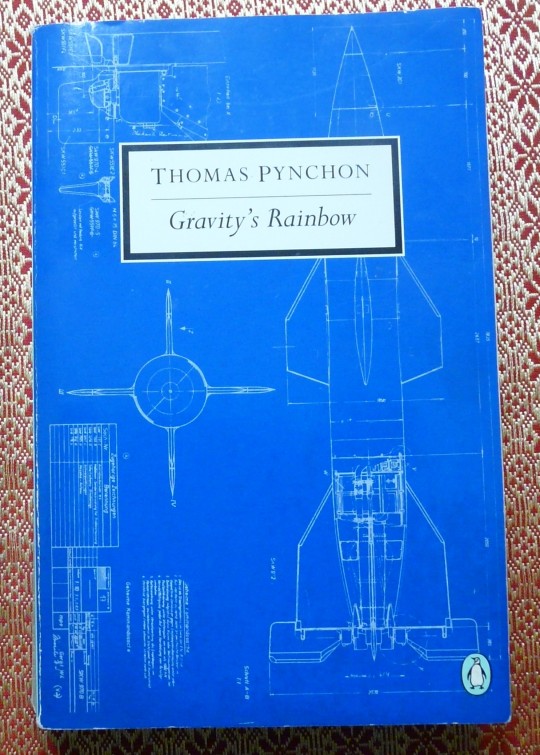
BOOK REVIEW
Gravity’s Rainbow by Thomas Pynchon
I will say the same thing about Thomas Pynchon’s Gravity’s Rainbow that I said about another of his novels, The Crying of Lot 49. You need to read this book a minimum of three times before you can really start to get it. The first time is just to see what’s there and to familiarize yourself with the text. The second time is to identify the narrative structure and the scheme of the story. The third time is when all the fine details emerge and the book really comes to life.
What eventually does emerge, after the third time through, is a loosely-structured, picaresque story that takes place at the end of World War II. It involves an ordinary and unremarkable man named Tyrone Slothrop, who is under surveillance. The reader gets introduced into a work with a countless number of characters, subplots, situations, symbols, show tunes, and commentaries, most of which may or may not add up to a complete and comprehensible picture. If it sounds like an overwhelming mess, that’s because it is and that is also why the novel is brilliant.
As it all begins, Tyrone Slothrop’s presence is barely noticeable. He doesn’t actually show up until three quarters through the first of the four sections. What does show up is his map of London covered with stars like the ones you get in kindergarten for getting all the answers right on your homework. As we a re led to believe, Slothrop puts each star on a place where he had sex with a woman. The stars multiply rapidly and the British secret service take notice because they have a similar map with stars located in the exact same places. But the spies’ map marks all the places where German bombs fell on London. These just happen to coincide with the places where Slothrop got laid. As they monitor his map, they feed the information to a team of researchers in a former mental hospital called “The White Visitation”. The team is managed by a bitter, sexually frustrated control freak named Pointsman, a Skinnerian behaviorist psychiatric researcher who also overseas a team of psychics and mediums whose seances are used to coordinate information with the statisticians and scientists in the vicinity. They are attempting to figure out how Slothrop is able to predict, through his sexual behavior, where each German bomb will fall.
Take note of a few things in this first section. The heavy snowfall introduces the color white as a symbol of death that persists through the whole book. BDSM is introduced as a symbol of colonial domination. Behavioral psychology experiments are also used to raise the question of whether humans can be controlled or not. Connections are made between science, technology, and multinational corporations. Also, the secret service and their colleagues at the White Visitation are involved in making a movie of some sort. Other themes that are introduced are the proximate relation of opposites that never correspond in full and the circularity of life. As one scientist points out, the stars on the maps of London are supposedly a record of Slothrop’s lovemaking, the place where bombs fall, and also the places where births are given. Then of course, there is the Rocket.
One of the great things about Pynchon’s writing is that he always states his main ideas in ways that are loud and clear. That is why his novels need to be read more than once; you can not identify what is being said loudly and clearly unless you are able to recognize how this is being done and familiarity with the text is what makes this possible. In the Case of Gravity’s Rainbow, there is a scene towards the end of the first section in which the captains of German industry attend a séance. The message they get from the medium, who later dies and makes contact with the psychics at the White Visitation, is that they need to learn about synthesis and control. This is also a message to the reader that these are the main themes of the novel.
But going back to Slothrop, we learn, if his memory serves him correctly, that during his childhood a behaviorist psychologist named Laszlo Jamf conducted Pavlovian experiments on him. But instead of conditioning a dog to drool, Jamf experimented with conditioning Slothrop to get an erection in the absence of sexual stimulation. As Slothrop progressed through life, ending up at Harvard studying rocket engineering, he always had a suspicion that he was being watched by people who were keeping records of when he got aroused. Then when World War II broke out, the American military stationed him in London for an undisclosed reason. It is there that we learn the private thoughts of Pointsman, a man who is obsessed with control but impotent and unpopular with women. Pointsman, being jealous of Slothrop’s sexual prowess, assigns himself the task of destroying the bumbling American soldier.
This first section is the most clearly written part of the novel. This is significant because it is here that all the major themes and characters get introduced, later to reemerge as the narrative moves on. The writing really does follow a narrative arc, like a rainbow or the trajectory of a rocket. As this arc climbs upwards, the literary threads all begin to intertwine as a clear picture of interconnections come into view, but as it descends, the details become less clear, the characters less distinct, details become fuzzy, the themes and interconnections less certain. Slothrop comes closer and closer to solving his own riddle and then the entropy sets in full force.
What is Slothrop’s riddle? He is searching for the Nazi-manufactured V2 rocket S-Gerat with the serial number of 00000. He thinks that finding this rocket will help him solve the mystery of what happened to him when he was a child and why there always seem to be people following him and arranging the events in his life. This plot comes into sharper focus when the secret service move him, again for some undisclosed reason, to the Hermann Goering Casino on beaches of the French Riviera. Notice that Slothrop, in his quest to find the source of the V2 rockets, moves below and counter to the route they take to London; the rockets are manufactured in Peenemunde, Germany, and shipped to Holland where they are launched to land in London while Slothrop moves from London to the Mediterranean coast, then up to Zurich and onward to the northern seacoast of Germany.
While on the beach, Slothrop rescues the Dutch prostitute and spy named Katje from an attacking octopus and becomes suspicious that the situation was staged so the secret service could film a movie of it. After that, other events at the casino appear to be staged for the same reason and Slothrop’s paranoia increases. What also happens in France is Slothrop’s frequent changing of costumes begins. It should be noted that Slothrop’s behavior and personality remain constant throughout the book no matter what outfit he is wearing. In his case, the clothes do not make the man. They are only superficial differences. The surface appearance does not synthesize with Slothrop. They are two parallel lines that come close to each other but never truly connect. This is a postmodern theme that runs through the whole book.
At a party, Slothrop meets up with a black marketeer who sends him on an errand to find a smuggler named Springer in Switzerland. At this point, the scientists and spies at the White Visitation can no longer control Slothrop because they do not know where he went. Slothrop becomes a hero because he has proven, through his own individuality and initiative, that a single person can resist and even break free from control by corporate and governmental powers. Furthermore, Pynchon is possibly telling us that Slothrop achieves freedom through hedonism; his constant pursuit of sex and drugs is what leads him out of the prison of modern technocratic domination. But something else is also pulling Slothrop along the road to freedom. While in Switzerland, he obtains a file from another espionage agent that gives details about Laszlo Jamf, the S-Gerat V2 rocket 00000, and an industrially produced material called Imipolex-G. This last detail rings a bell and Slothrop thinks that if he can learn more about it, he will know everything he needs to know about himself. He leaves for Germany in search of the rocket.
Germany, in the third section of the novel, is dubbed the Zone. The Nazis have lost and the war is coming to an end. The country is in chaos as barriers and boundary lines are breaking down. Slothrop is not the only one pursuing the S-Gerat rocket. Enzian is the leader of the Zone Hereros, a group of German colonial subjects from Namibia that were saved from genocide and brought to Germany by Weissmann, the Nazi general overseeing the building of the V2 rockets in Peenemunde. Enzian has a vision that if he can get ahold of the 00000 rocket, he can start a new religion to correct and replace the false beliefs of Christianity, thereby allowing the Black Hereros to colonize Germany. Enzian also has a Russian half-brother named Tchitcherine who was sent as a Soviet linguist to develop a written alphabet for the Kirghiz languageas part of a colonialist prject. While at a ceremonial poetry reading with the Kirghiz tribesman, he hears a poem about the Kirghiz Light, a mystical flash that caused the poet who witnessed it to go blind. Was it a flash from an atomic bomb? We can never know, but Tchitcherine gets sent to Germany and he also goes in pursuit of the V2 rocket, which he believes to be the source of the Kirghiz Light, while also nurturing plans to kill his half-brother Enzian.
There is also the story of Pokler, a rocket scientist who cares nothing about Nazi politics or anti-Semitism, but also wants to help develop the rocket because he believes it to be a means of transcendence. For him, Nazism is a means to a higher end. He believes the future of the world lies in rocket science which will allow the human race to leave the planet, reaching a higher stage of civilization in outer space. But Pokler has a sexual fetish and Weissman uses it to control him; Pokler is a pedophile who molests his daughter. Weissman lets him spend time with her whenever he wants something done, but as the years go on, Pokler realizes that each time a different girl is brought to him, probably because his real daughter was killed in a concentration camp. As this realization dawns on Pokler, the novel’s arc begins its descent and things begin falling apart.
Sexual fetishism is a theme that plays out throughout the whole book. Whether it be BDSM, sex toys, incest, pedophilia, coprophagia, or any other paraphilia, the behaviorist psychologists have caught on that people can be controlled by limiting their exposure to their fetishes. The more specific the fetish, the more control can be exerted over an individual. In contrast, Slothrop is liberated because he has no specific turn ons; he simply takes whatever sexual partners come his way, therefore his sexuality is a means of liberation rather than a mechanism of control.
As Slothrop continues on a series of misadventures, all involving sex and drugs, one character criticizes him for being paranoid, meaning he sees connections between things that are not connected. Slothrop goes into reverse and starts to think that there are no connections between anything. Furthermore, he also loses interest in his pursuit of the S-Gerat rocket. Despite his waning interest, Slothrop picks up some more information from an aging, mentally unstable German actress named Margherita Erdmann. From her he learns that Imipolex-G is a plastic invented by Laszlo Jamf and used as a binding unit in the S-Gerat rocket. Jamf wanted to invent something that transcends and dominates life, so he synthesized the material without the use of carbon which is the building block of all organic life on Earth. Not only does this plastic transcend life, it also can be shaped and molded into any form you please. For this reason, Jamf gets sent to America where he conducts experiments trying to shape and mold Slothrop, and human society as well, using behaviorist psychology, turning people into plastic to be manipulated by the technocrats who control the world. Do all the references to film and cinema have something to do with this? The passage about Imipolex-G ties together all the previous references to science, technology, and industrialization from the previous parts of the book. Here we learn that World War II is all a performance being put on to make it possible for the military industrial complex to take control of the world behind the scenes. A cabal of leaders from chemical, military, energy, transportation, and pharmaceutical companies have conspired to control the rest of us who are unfortunate enough to have no access to the realms of corporate power. Governments are just a smokescreen and World War II is just a way for the multinational corporations to make money. In fact, because of this cabal, the rockets being used to bomb London were made with materials manufactured by a British corporation.
But then one character explains that Laszlo Jamf never existed; he was created in the paranoid mind of Tyrone Slothrop to help him make sense of the world he lives in. But what if that character was lying about Slothrop’s delusions? What if that character was the one who was delusional? In the works of Thomas Pynchon there are no final answers. Weren’t they really out to get Slothrop anyways? When a couple of British doctors go searching for Slothrop in a German whorehouse, they find Marvy, the fat racist redneck idiot from Texas, and castrate him thinking he is Slothrop. This was done on orders from Pointsman. If that isn’t certain enough, we at least get a sense of what sector of the American population Pynchon isn’t proud of as Marvy is the butt end of cruel jokes throughout the whole story as he deserves to be.
In the final section of the book, Slothrop has faded away out of the narrative. There are suggestions that he has turned into the Horned God Pan as he lives in the woods without clothes and plays his harmonica rather than panpipes, which he almost loses in a creek. This refers us back to the beginning when Slothrop drops his harmonica in a toilet while attending Harvard while Red and Charlie, references to Malcolm X and Charlie Parker stand by and watch as he tries to get it out in one of the grossest passages of the book. There is one further mention of Pan in later pages. Perhaps Pynchon is suggesting that freedom from the military industrial complex can be achieved by a return to nature. The 1960s counter-culture makes an anachronistic intrusion into the latter half of the text.
The final section of the book also ties back to the first section in other ways too. Slothrop is first introduced as he eats some disgusting candies with an elderly woman in her London apartment and at the end the statistician Roger Mexico deliberately ruins a dinner party by describing the most disgusting foods he can think of. This is one of the most hilarious passages and I can not describe it any way that can do it justice. Are these passages connected? Kind of, not really, but maybe. That is how the book operates. There is also the final scene where an audience is watching Hansel and Gretel being performed in a London theater, but the end of this scene takes place closer to the beginning of the book. The scheme of the book is circular, turning back in on itself in Joycean fashion.
The themes of the book are also fuzzy. We learn towards the end that Slothrop’s map may not mark places where he got laid after all. The scientists at the White Visitation try to locate all the women he slept with and are unable to do so. The only one they can find is the old lady who gave him the disgusting candy. It is possible they were misreading the situation all along. And how would that explain the parallels between Slothrop’s map and the secret service’s map? Is there something they overlooked? Again, two parallel lines that never actually join together.
Then of course, there is the story of Benny the Bulb, a seemingly randomly inserted non-sequitur of a story that explains a lot of what Gravity’s Rainbowis about. Benny is a disobedient light bulb who tries to lead a conspiracy against the company that manufactured him. But the other bulbs aren’t too bright. Haha, get it? That’s Pynchonian humor right there. They refuse to go along with him. Still, he insists on rebelling by switching off at times of his own choosing. He is the bulb that sees the truth of the world and how the industrial corporations control everything, but he is powerless to do something about it so he spend his lifetime, if light bulbs actually have life times, simmering in impotent anger. Just like so many people in the world who have reached the same place as him. But wait a minute...weren’t there other bulbs in the narrative that went out at random times? Or am I remembering something that wasn’t there? If it’s true, then were all those bulbs part of Benny’s conspiracy? If it’s not true, am I being paranoid? Am I having false memories or am I more accurate than I think? In order to understand the novel, Pynchon makes you paranoid so you can see the point he is making about paranoia.
There is so much more to Gravity’s Rainbow. It would be impossible to cover it all here. There is a bewildering amount of information, none of the plots ever reach completion, we never learn what happens to most of the characters. That is what life is like. It is impossible to tell if all the interconnections are connected or if we, like Slothrop, are using paranoia as a mechanism to make sense of the world we live in. My interpretation of it all is that Pynchon is telling us that paranoia is a normal response to a world that is consistently uncertain, incomprehensible, and without any final answers. Maybe he also means to say that a little paranoia might go a long way in making each of us, as individuals, more free.
5 notes
·
View notes
Text
the traitor baru cormorant, by seth dickinson: four and three quarters out of five backstabbings
a novel about colonization and the question of maintaining integrity while trying to change an oppressive system from within.
every character is believable. the tensions are subtle and drawn out magnificently throughout the long span of the book. the author is fantastically intelligent. despite the complexity of the plot, it is easy to understand, even if you lose track of some of the supporting cast sometimes.
queer representation. polyamory representation. ethnicities are fantasy groups, so i can't say there's broad representation there, but the fantasy resembles earth differences in a way that feels like representation.
be warned: the book has a twist like a knife. all my friends who recommended it told me to "prepare." i know that this is a short review, but i can't recommend this book enough to people who want to explore its themes. for anyone who would find a close look at the oppressive systems of colonization traumatic, however, avoid this book. the legal punishments for deviation in this colonial polity are utterly barbaric. the things allowed to the agents of this state are unconscionable. of course, they come bearing gifts -- dentistry, plumbing, medicine -- but their gifts come at a price.
it lacks the transcendence of lord of the rings, but there are few ways in which this book fails to satisfy; i had a hard time dialling down my endorsement to four and three quarters. as far as normal books are measured, this is as good as it gets.
there are sequels.
#the traitor baru cormorant#the masquerade series#book review#books reviews#review#reviews#fantasy#queer literature#queer lit#horrible betrayal#seth dickinson
3 notes
·
View notes
Text
I've just read some of my old book reviews I used to do (about two years ago).
Wow, now I feel like a burnout kid.
#writing#messy thoughts#my thoughts#thoughts#books#reading#books reviews#gifted kid burnout#gifted?#WAS I GIFTED?#am i still gifted?#i write some stories but... should i take it seriously?#idk
3 notes
·
View notes
Text
February & March Wrap-Up
Hello dears, finally we are going to do the wrap-up for February and March, these two months I read 5 books, wuuuu. Very good reads so far, and closer to the goal at 40 books.
For February, I read Lost In The Never woods as my book of the month, and then I read Cinderella is dead.
Lost In The Never woods by Aiden Thomas is the retelling of the Peter Pan tale, where Wendy, now 18, is a hospital volunteer and a social outcast after her disappearance with her younger brothers when she was a child. Now it seems that disappearances begins again and everything seems to connect to Wendy and that strange young man who ran over (BY ACCIDENT) who calls himself Peter Pan. I loved the book, the author's narrative style is captivating and presents a very interesting story with regarding the lore of Peter Pan. Highly recommended 10 out of 10, and the song that related Only You by Selena Gomez.
Cinderella is dead by Kalynn Bayron is about Sophia who lives in this kingdom where the girls are forced to go to Cinderella's ball and be chosen by the bachelors of the town and towns near the kingdom. But Sophia doesn't want this for her life, she doesn't want to marry a man but her best friend, (her female best friend, go bestie). On the day of the ball, she escapes and discovers the truth of Cinderella's tale, so she decides to free the town along with Constantine (a descendant of Cinderella's family). It's a very good concept and the world isn't bad, but it's a story that lacked a bit more development and the protagonist doesn't seem to have any arc. I'm going to give it a 7 out of 10, if you like fairy tale retelling, give it a try. The song is Cinderella is dead by EMELINE.
And in March I read In The Afterlight, She Drives Me Crazy and La Fosa de Agua (The Water Pit).
In The Afterlight by Alexandra Bracken. The third and last part of the story of Ruby, a young woman who was born with powers to manipulate the mind. The book is a dystopia in the United States (obviously, where most youth dystopias happen) about children who develop powers and the government tries to control them in every possible way. The saga is incredible, Bracken has great pacing and a narrative voice that follows you through Ruby's journey on the run from the government and her mission to be free from it. It gets a bit heavy reading all the tragedies the characters go through, but a dystopia that I highly recommend, 9.5 out of 10. The song she assigned to it is Whatever it takes by Imagine Dragons.
She Drives Me Crazy by Kelly Quindle is about how Scottie survives her first breakup and uses Irene to do it, it sounds very bad, but I promise you that the book works like a romcom that you actually put effort into the characters and their arcs. Scottie's arc is beautiful, and Irene is a goddess (I was already in love with this character when she mentions her contempt for AP European History). The song that related it is 7 things I hate about you by Miley Cyrus, and also the film 10 things I hate about you; they have the same vibe but if they were lesbians and with a happy ending.
La Fosa de Agua by Lydiette Carrión is not an easy-to-read book, but Lydiette's narrative makes it fast. The book belongs to narrative journalism that portrays real events but with narrative tools to make it more digestible and captivating. This text mentions various cases of girls being kidnapped in Mexico, and no, they do not find them as they wanted. A bittersweet reading about the reality in this country, but something that must be recognized and acted upon. 10 out of 10, the author does not romanticize and tells everything with a serious and intriguing tone. I couldn't put on another song that wasn't the hymn of Sin Miedo de Vivir Quintana.
These months I had very good readings, the one that surprised me the most was She Drives Me Crazy and the one that disappointed me was Cinderella is dead. For more good readings in April and the rest of the year.
How have your readings been so far? Which of the books that I have read are you interested in reading, or would you like to review for a longer period? What books do you recommend that I read in these coming months?
#english#literature#latinx literature#saphic literature#ya literature#literary journalism#she drives me crazy#kelly quindle#Cinderella is dead#kalynn bayron#La fosa de agua#Lydiette Carrión#alexandra bracken#in the afterlight#lost in the never woods#aiden thomas#good books#books reviews#mini books review#february and march books reviews#february readings#february 2023#march readings#march 2023
3 notes
·
View notes
Text
Dracula
DraculaBram Stoker | Signet | 1965 (originally published 1897) | 382 pages
Reading Dracula again after several decades only reconfirms its rightful place in the pantheon of horror classics.
The book opens with Jonathan Harker’s journal entries, which brilliantly introduces the reader into the sinister atmosphere of Castle Dracula. Harker’s realization that Dracula is perhaps not what he seems…
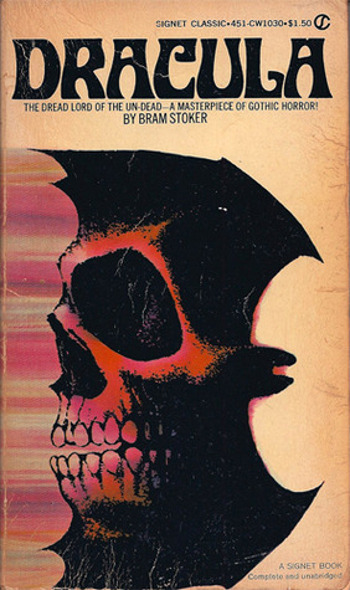
View On WordPress
#Books Reviews#Bram Stoker#Classics#Dracula#Gothic#Horror#Hypnotism#Signet Books#Transylvania#Vampires#Vintage Paperbacks
6 notes
·
View notes
Text
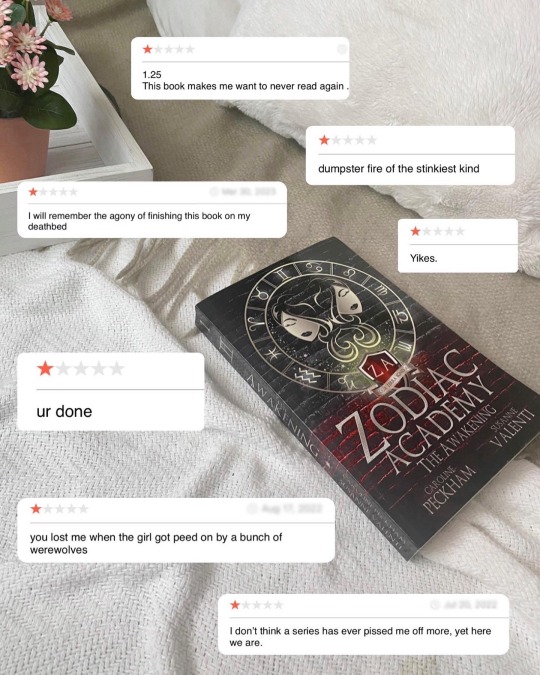

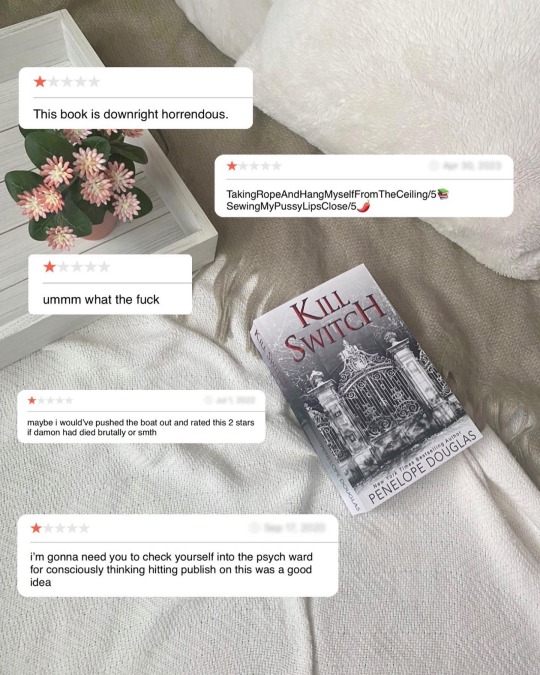

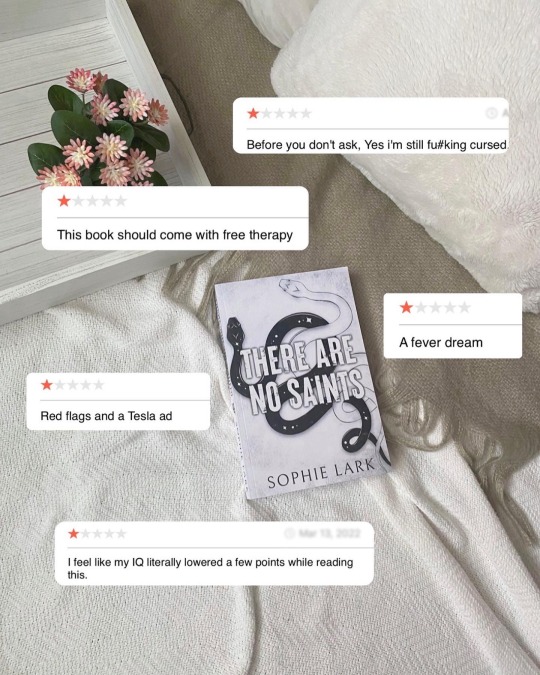
Some of my favorite books as 1☆ reviews
#book blog#bookaddict#bookaholic#bookshelves#bookstagram#booktok#bibliophile#booklovers#bookstack#bookworm#books reviews
5 notes
·
View notes
Text
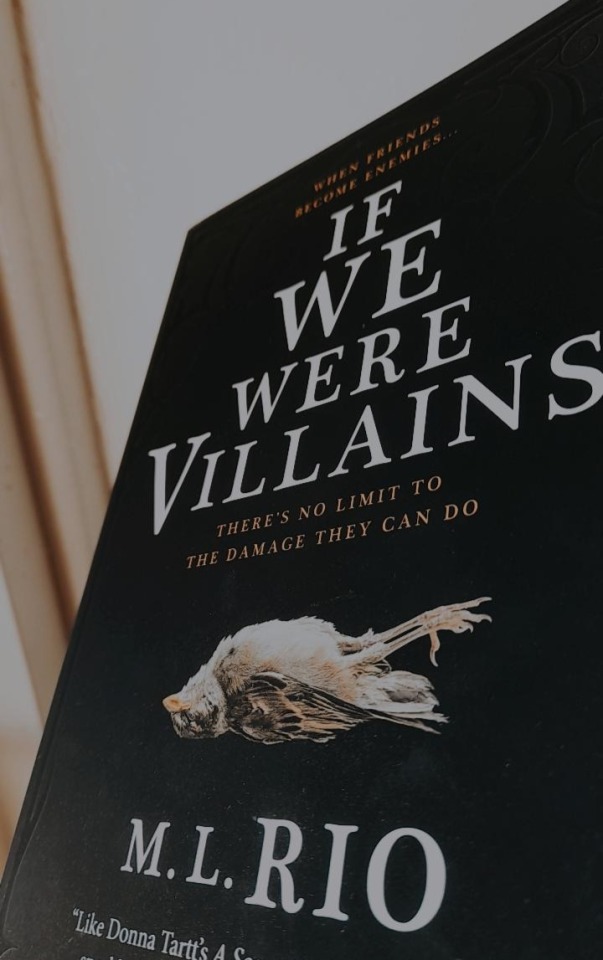
“If We Were Villains” By M. L. Rio
Blurb: Enter the players. Seven young Shakespearean actors at Dellecher Classical Conservatory, a place of keen ambition and fierce competition. But in their fourth and final year, one of them is found dead. In this secluded world of firelight and leather-bound books, they find themselves facing their very own tragedy, and their greatest acting challenge yet: convincing the police, each other, and themselves that they are innocent.
“Which of us could say we were more sinned against than sinning? We were so easily manipulated - confusion made a masterpiece of us.”
★★★★★
I picked up “If We Were Villains” because the cover is stunning (I got the Titan Books edition) and because – please forgive me, M. L. Rio – it reminded me of “The Secret History” by Donna Tartt, which I actually haven’t read yet. Yes, yes, I know we must never judge a book by its cover, but in this case I’m glad I did.
This is a story about love, friendship and obsession. This is a story about words and passion and the power of unspoken truths. This is a story about Shakespeare.
I can’t say much about the plot without spoiling the ending, only that it’s finely crafted, that every detail matters, and that although I guessed what would happen in the end, it’s only because I was looking very hard for clues – and they were all there, from the very beginning. This is something I’ve always admired in other people’s writing: subtle foreshadowing. The plot is so intricately woven that, if you read between the lines, you can guess the climax from the first few chapters. This doesn’t make the journey any less enjoyable. On the contrary! The minute I understood what was happening, I wanted even more desperately to read it in Rio’s words.
That takes me to the next point: the prose. Let me say, very subjectively, that the prose in this book is good. Rio plays with language in ways that are at times lucid and understated, but she also knows how to indulge in not-quite-purple, perhaps-slightly-periwinkle prose. I enjoyed it immensely, and if there is one thing you should know about me as a reader, it’s that I value good prose, sometimes even over plot.
The last thing I want to talk about is the characters. I think the author did a great job of making each and every one of them a living, breathing person, instead of an archetype of the role they would end up playing. I imagine that’s why the ending is so gripping, so heart-wrenching and real.
I give “If We Were Villains” by M. L. Rio 5/5 stars.
6 notes
·
View notes
Text
A review of June-Alison Gibbons' unsettling novel The Pepsi-Cola Addict
Fourteen-year-old Preston Wildey-King has a lot of problems. He’s on the outs with his girlfriend Peggy. His best friend Ryan always leers at him in a funny way, and Ryan’s older brothers want him to join their gang and do crimes. His older sister Erica accuses him of stealing from her. Preston’s failing at math, and his teacher might be trying to seduce him. His mother doesn’t know what to do…

View On WordPress
#art brut#Blog about#books reviews#Cult Novels#June-Alison Gibbons#outsider literature#Reviews#riffs#The Pepsi-Cola Addict#The Silent Twins
0 notes
Text
Review: House of Flame & Shadow by Sarah J. Maas **SLIGHT SPOILER AT END WITH LAST THOUGHTS**
2024
4 minutes
acotar, azriel, book review, bookish, booklr, books, booktok, bryce quinlan, crescent city, fantasy, hofas, house of flame and shadow, hunt athalar, lidia cervos, maasverse, reviewer, ruhn danaan, sarah j maas, sarah j. maas, TBR, writer
With Sarah J. Maas’s third installment of the Crescent City series, I was sent on a wave of emotions!
To start off, for the first 500 pages of HOFAS, I was struggling. It took me about two months to complete 500 pages. I felt as though Maas’s work for the first half of the book lacked depth and clarity in its story-telling. I was struggling to continue as I read and like it flip-flopped between characters so suddenly. (We’ve watched Maas do this successfully in KOA with pacing so I was unsure of why it felt so long in HOFAS.)
Bryce became an unreliable narrator. I don’t know how to feel about it yet as I’m writing this review because in her first two novels of CC, we saw a little more into the reasons why she did what she did. For this book, we got her thoughts once she did the thing she did and really took home the title of “AWOL” in this book.
However, once I hit halfway, I knew Maas was going to unleash some fire and shadow onto her pages! Truly, she’s one of the only authors I know that is capable of sweeping me off my feet in ten pages and I won’t be able to put it down until it’s finished.
In one breath, Maas had me thinking that everyone was going to die in this book. And in the next, gave me something to want to fight for these characters. The last 400 pages of plot development started to make sense and she got me again.
Lidia and Ruhn’s spice in this book really drove it home for me to fulfill the Maas spice needed for me, whereas in Bryce/Hunt’s spice was a little lackluster. (sorry BrycexHunt stans). I was a little upset because I wanted so much spice. But honestly, can you blame ANY of these characters for not getting it on. I can’t.
I did cry towards the end at this scene*. I don’t know why but it broke me just about as much as The Thirteen in KOA. IYKYK. That’s the last I’ll say on that.
am so happy that Azriel has finally said more in one book than the entirety of his own universe. It’s hysterical.
Please turn away from spoilers and stop reading now if you want to avoid. Just my final thoughts on where the Maasverse is going to go.
**PERSONAL THEORY**
Bryce does in fact open up a Dusk Court and I do think Elain or Nesta will become the High Lady of this court. What Bryce did absolutely had to have an effect at what I presume (the tunnel system/prison) to be the dusk court summoning, by summoning the Blue Court in Midgard. Maybe a certain type of magic in this world will call to Elain and Nesta and they can go on their own personal journey with the Starsword and Truth-teller. Even though Nesta’s storyline could be done because ACOSF IS KING, we know she’s badass enough for more. And I would LOVE to see it. Feyre and Rhys need their break with Nyx. But, I do think we will see our fall of Cassian (MAYBE). But now we know we can bring the dead back and necromancy is possible in the Maasverse so anything can happen.
I want to see Maas wipe a major and favorite character. Will she ever do it? As much as I don’t want it.. I can see Nesta and Cassian taking a hit somewhere. Their storyline seems to be a little bit more driven in HOFAS due to where one of the final scenes leave us in the ACOTAR world and Bryce’s mother ensuring Nesta that she will find her way.
I love a happy ending, but I also love a true ending. Maas is kick-ass and I would just love to see her do something different in future books so not all endings are predictable. But I know that I am truly in the minority in thinking like that LOL.
* Scene where Bryce and Connor are waving and she hears Light It Up. (I personally love this as a nice little motivator for her! So cute tbh)
⭐⭐⭐⭐Rating: 4 out of 5.
4/5 STARS ! – Committing to the TBR
#books#book review#books reviews#maasverse#house of flame and shadow#hofas#hofas spoilers#cc3#crescent city three#crescent city series#bryce quinlan#hunt athalar#ruhn danaan#lidia cervos#booklr#booktok#fantasy books#book blog
1 note
·
View note
Text






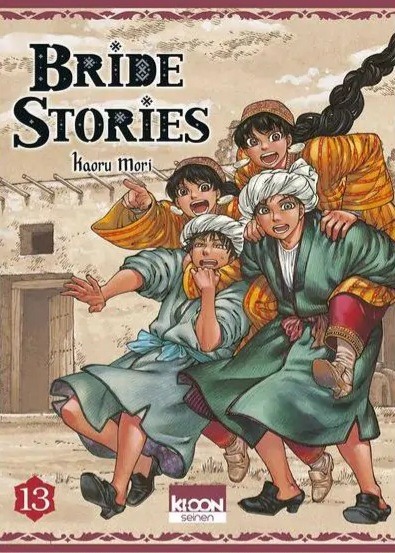
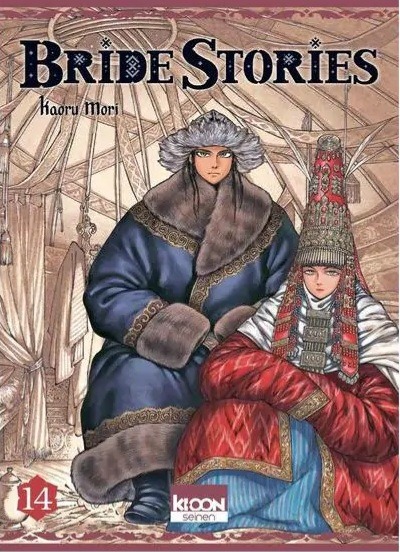


JANUARY WRAP UP ☆
Wandace 1 - Coffee
★★★ - review
Matcha Made in Heaven 5 - Umebachi Yamanaka
★★★★ (re-read)
Matcha Made in Heaven 6 - Umebachi Yamanaka
★★★★
My Ultramarine Sky - Nagisa Furuya
★★★★ e-Arc - review
Le Voyage de Shuna - Hayao Miyazaki
★★★★★
Valse à 3 soeurs - Melome Machida
★★★ - review
Brides Stories 13 - Kaoru Mori
★★★★★ (re-read)
Brides Stories 14 - Kaoru Mori
★★★★★
An Ember in the Ashes - Sabaa Tahir
★★★★★ (re-read)
Mongrel - Hanako Footman
★★★★ e-Arc review
0 notes